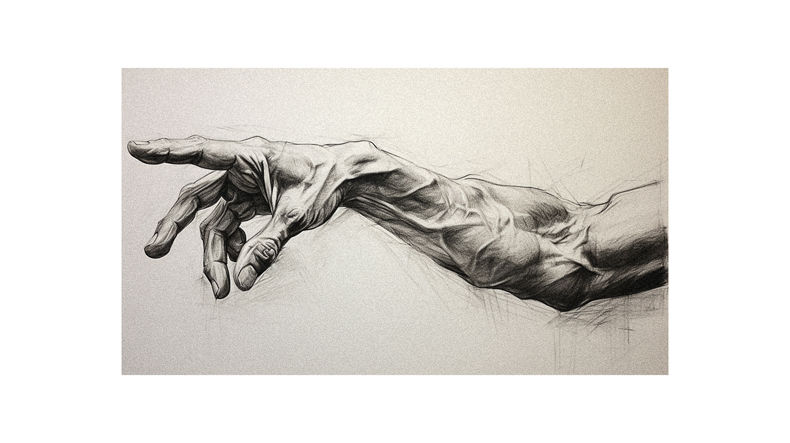As the old adage goes, ‘practice makes perfect,’ this couldn’t be more true when it comes to accurately drawing human anatomy.
I’ve found that by breaking down complex structures into simpler forms, understanding the underlying skeleton and its relationship with muscles can be much easier. It’s a continuous journey of learning, reviewing, correcting, and practicing more to improve your drawings.
We’ll also delve into filling in our knowledge gaps by learning technical names for anatomical structures. But improving anatomical accuracy isn’t just about understanding the body; it’s also about honing our fine motor skills and hand-eye coordination through exercises like contour drawing or gesture drawing.
So join me as we explore practical exercises that will sharpen your sketching skills and improve your anatomical accuracy – because every great artist knows their craft is a constant work in progress.
What is it?

So, what’s this all about? It’s all about finding practical exercises that’ll help you better capture the intricacies of human anatomy in your drawings.
It’s no secret that drawing the human body can be challenging. That’s where these exercises come in. They’re designed to break down this complex task into manageable pieces, allowing you to focus on individual parts of the body and how they function.
These exercises aren’t just about copying what you see. Instead, they aim to provide you with a deeper understanding of the underlying structures of the body—bones, muscles, and all. This knowledge can then inform your drawings and give them a greater sense of realism and accuracy.
It’s not an overnight process; trust me, it’s worth every minute spent practicing!
Understanding the body
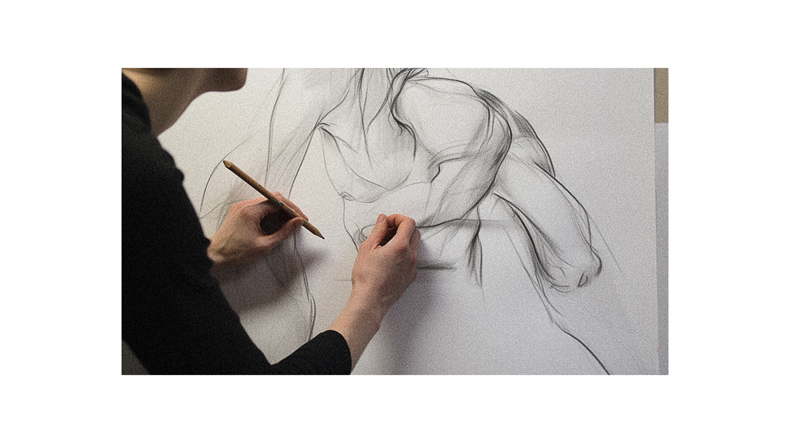
Imagine you’re an architect; the human body is your latest masterpiece. Understanding every bone, muscle, and joint is like knowing each beam, wall, and floor plan in intricate detail. This knowledge will guide you to accurately lay down lines that form a believable human figure on paper.
Think of it as building from the ground up – starting with the skeleton for structure, adding muscles for form and shape, then skin and features for final details. It’s not always about drawing every single tendon or vein but capturing their essence to support the overall image.
So grab your sketchpad and delve into anatomy books or online resources like ImagineFX magazine subscriptions. Practice daily and remember: don’t just draw what you see but also what you understand.
Simplifying forms
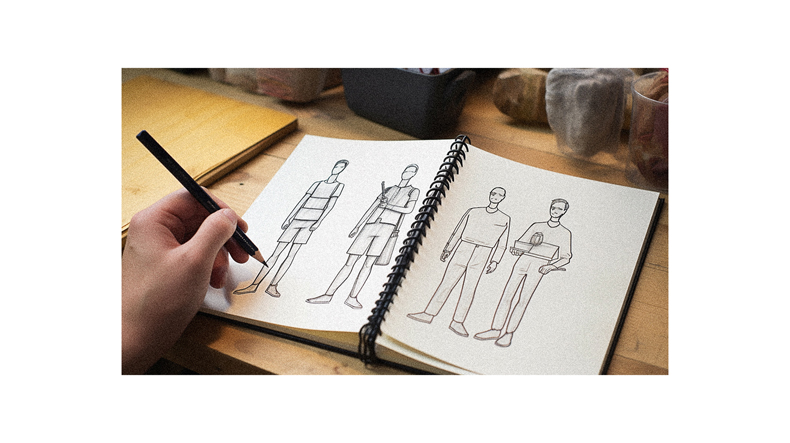
Don’t let the complexity of the human body intimidate you; instead, embrace it by breaking down those curves and angles into simple forms that are easier to manage. Think of your subject as a collection of basic shapes like circles, squares, triangles, and cylinders.
Now imagine assembling these shapes to resemble the human figure – it’s more manageable when you break it down this way, right?
Try drawing a simplified skeleton using these basic forms. This will give you an easy-to-follow roadmap for adding muscles later on. Don’t worry about capturing every minute detail at this stage; focus on correcting proportions.
This approach may seem elementary, but trust me, it’s effective! It offers a tangible starting point and reduces the chance of becoming overwhelmed with intricate details too soon.
Skeleton and muscles
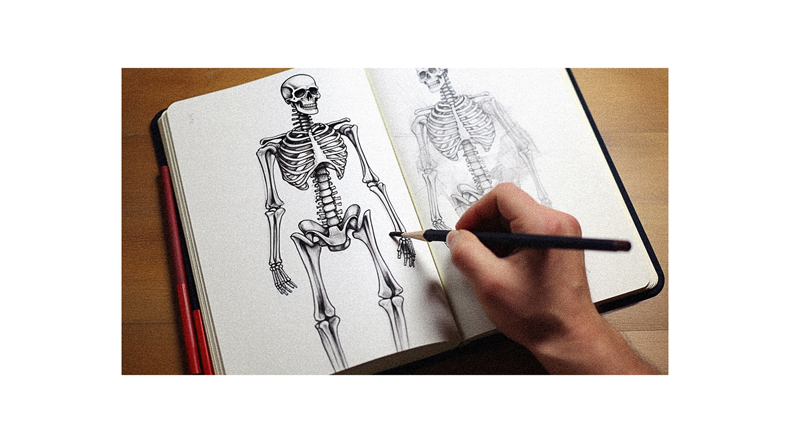
Understanding the skeleton and muscles is your next step in mastering human anatomy drawing. It’s like having a blueprint for constructing a building, except this time, you’re constructing the body in your sketches.
Start by familiarizing yourself with the basic structure of the skeleton. You don’t need to know every bone, but understanding how they connect and their proportions is crucial.
Next, layer on the muscles. Remember not to draw them as symmetrical bulges – they have flow and direction. They attach to bones and move joints, so consider that when sketching them out. Muscle groups work together, not just one muscle moving at a time.
This process takes patience and practice. Keep going! Every drawing brings you closer to fluency in anatomy.
Review and corrections
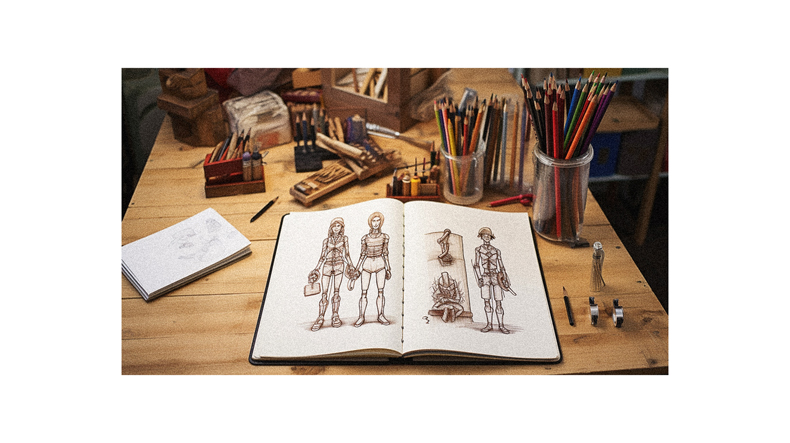
Let’s dive into reviewing and correcting your drawings, shall we? It’s essential to the learning process, refining your skills and understanding of human anatomy.
Now, here are four steps to enhance your review process:
- Give it time: Don’t rush to critique right after you’ve finished drawing. Take a break, then come back with fresh eyes.
- Use references: Compare your work with anatomical pictures or models to identify discrepancies.
- Seek feedback: Share your work with others. A different perspective can point out things you might have missed.
- Redraw: After identifying errors, redraw those parts or even the whole piece if necessary.
Remember, it’s all about progress, not perfection; every mistake is another step forward!
Importance of drawing
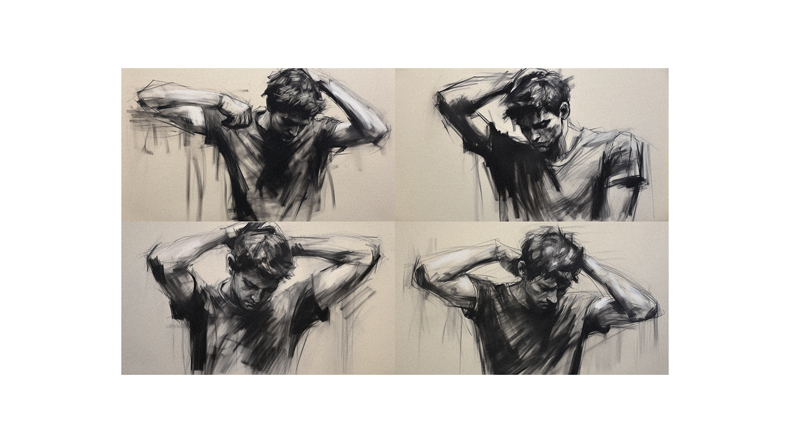
So, can you skip the drawing part and jump straight to mastering anatomy? Well, that’s not exactly how it works. Drawing is an essential part of understanding anatomy.
When I draw, I’m not just copying what I see; I’m learning about the structure and form of what I’m depicting. Without this foundational knowledge, my attempts at drawing anatomy would be off the mark.
Drawing helps me visualize and internalize the underlying skeletal structure and muscle placement. This understanding aids in creating a more accurate depiction of human figures in different poses.
Moreover, when mistakes are made – which they will be – reviewing and correcting those drawings reinforces my understanding. So, remember: keep those pencils moving! It’s all part of the process towards anatomical accuracy.
Creating dynamic flow
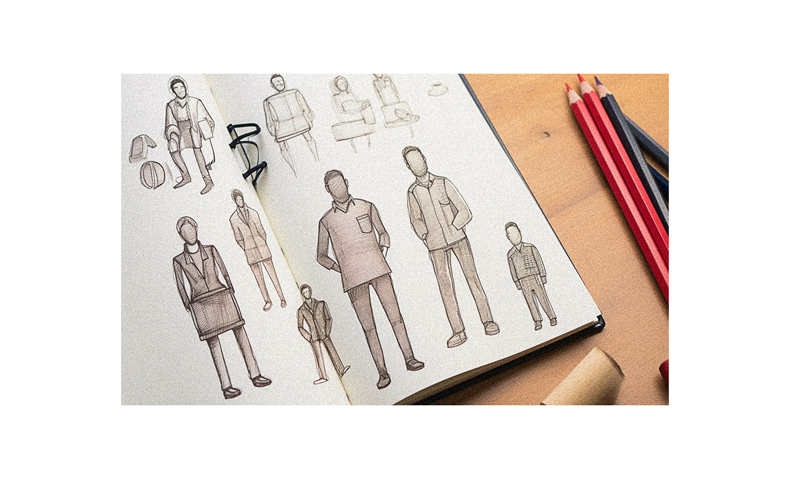
Don’t get caught up in drawing perfectly symmetrical bulges; instead, aim to create a dynamic flow to bring your figures to life.
It’s easy to become obsessed with precision and forget that the human body is fluid and constantly in motion. Each muscle has its unique shape that bends and flexes with movement.
Instead of rigidly adhering to textbook anatomy, I like to imagine how these muscles would move in real-life situations. I practice this by sketching quick gestures of athletes or dancers in motion, focusing on capturing the energy and movement rather than exact anatomical accuracy.
This exercise helps me understand how muscles interact with each other during different activities, ultimately improving my ability to draw more lively and accurate figures.
Focus on essential details
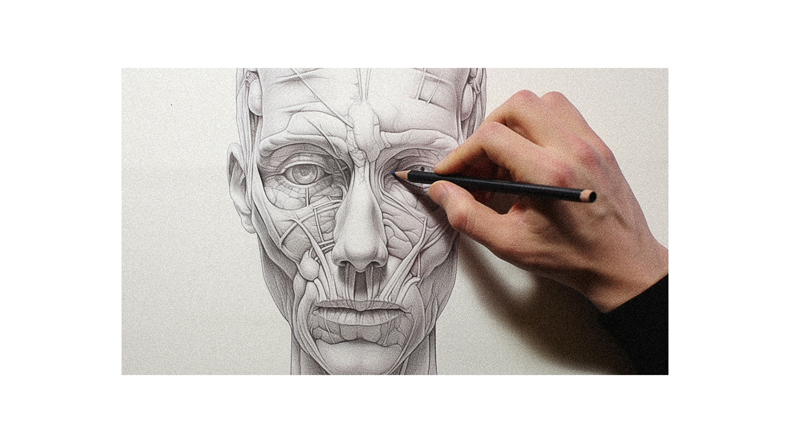
Transitioning from creating dynamic flow, let’s divert our attention to honing in on essential details.
It’s easy to get caught up in the intricacies when drawing anatomy. However, it’s important to remember that not every detail needs to be included—focusing too much on this can lead to a stiff and unnatural representation. Instead, concentrate on what truly supports your overall picture.
For instance, while sketching a hand, the wrinkles and creases may seem fascinating, but they aren’t always necessary for communicating its form and function. Thus, identifying these essentials in different body parts will improve your anatomical accuracy over time.
Remember, keep your eyes open for significant characteristics rather than getting lost in minute details!
Continuous learning process
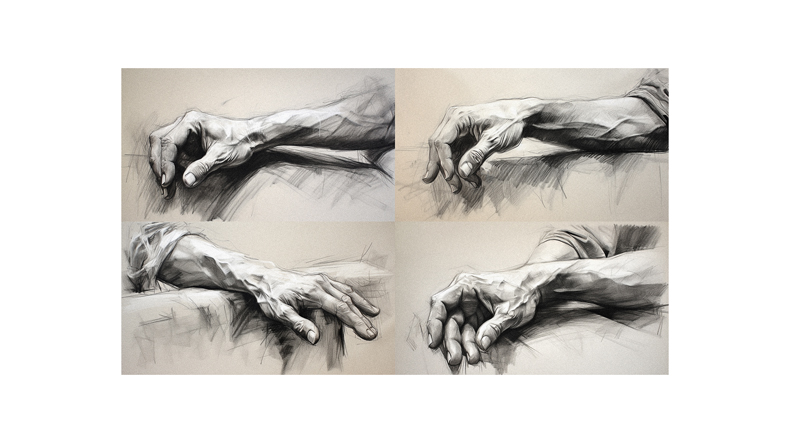
Mastering anatomy is a journey, not a destination; it’s about growing, learning, and evolving with each sketch you create. I’ve found that truly understanding the structure of the human body is an ongoing process.
Every day, every drawing brings new insights and a better perception of form and proportion.
In my practice, I constantly challenge myself to delve deeper into details, picking different areas to focus on each time. I might spend one session concentrating on arms or legs, perhaps the torso or face next time. This way, I’m constantly improving different aspects of my anatomical knowledge.
Sometimes, it’s frustrating when progress seems slow, but remember: Rome wasn’t built in a day! It takes time to absorb and apply all this information correctly in our drawings. So be patient with yourself – keep practicing and never stop learning!
Improving different aspects
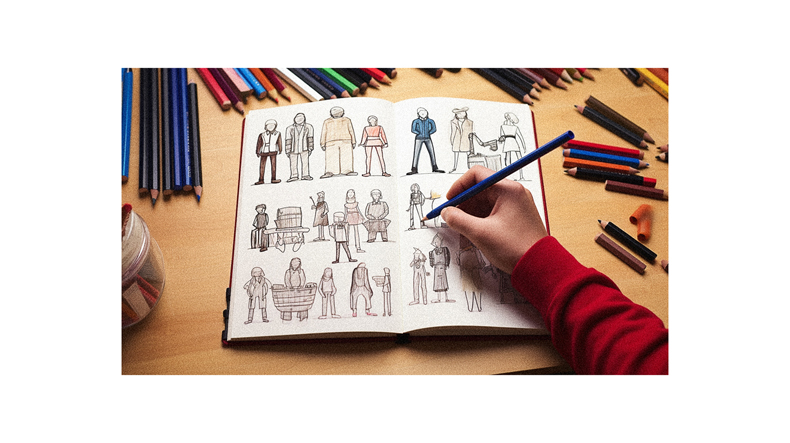
Continuing from the idea of anatomy as a continuous learning process, it’s important to emphasize improving different aspects of our anatomical knowledge.
Just like any other skill, mastery comes with focused practice and repetition. For instance, if you’re struggling with drawing hands or feet, dedicate an entire sketch session to studying these parts alone. Deconstruct the complex forms into simpler shapes; understand how each finger or toe connects to the overall structure.
Don’t be afraid to make mistakes – they are part of the learning journey! The same approach can be applied to other challenging areas, such as facial features or muscle groups. By breaking down these intimidating subjects into manageable pieces, we can gradually build our accuracy and confidence in drawing human anatomy.
Fill in knowledge gaps
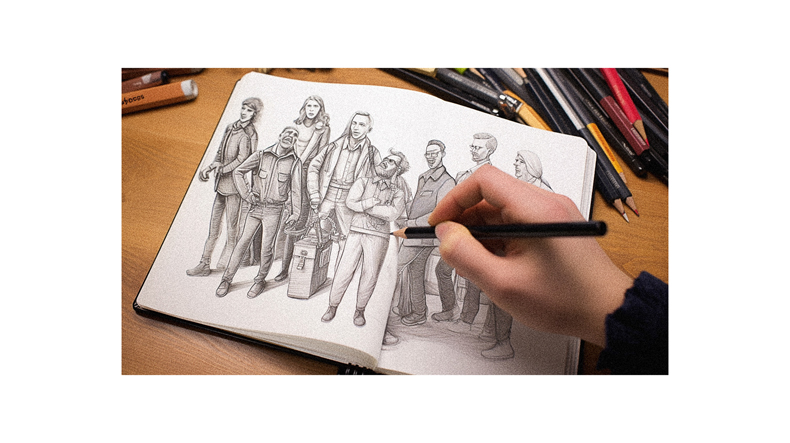
Have you ever hit a roadblock in your sketches because there’s a part of the body you can’t get right? I’ve been there, and it can be frustrating. But don’t worry; this is common when learning anatomy for drawing.
Here’s what I suggest: identify your struggling areas and focus on those. For instance, if hands are your nemesis, draw only hands for a week. Use references from real-life or anatomical books for accuracy. The point is to fill in those gaps in your knowledge through dedicated practice.
And remember – mistakes aren’t failures; they’re opportunities to learn and improve your craft! So keep going, take it slow and steady; soon enough, you’ll see progress in your anatomical accuracy!
Learning technical names
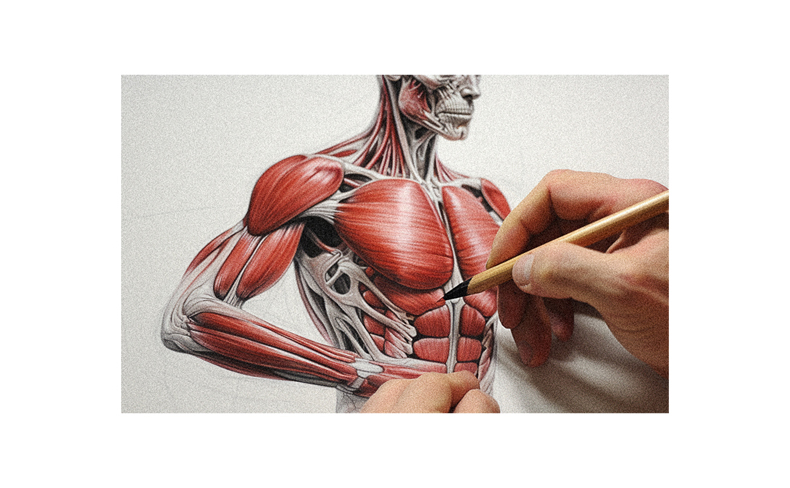
Diving into the technical side of things, you must get acquainted with the actual names of body parts and structures. Knowing what a ‘scapula’ is or where the ‘sternocleidomastoid’ is located can dramatically improve your anatomical accuracy. These aren’t just fancy words to impress others; they’re tools for understanding and visualizing the human body.
I found flashcards very helpful in this regard, turning learning into a fun game rather than a chore.
Additionally, consider getting an anatomy book specifically for artists. They label everything clearly and show how each part contributes to movement and posture.
Remember, no one expects you to become a medical expert overnight! Take your time absorbing these new terms while practicing your drawing skills.
Follow us on Pinterest for more tips, tutorials, and artist reviews!

